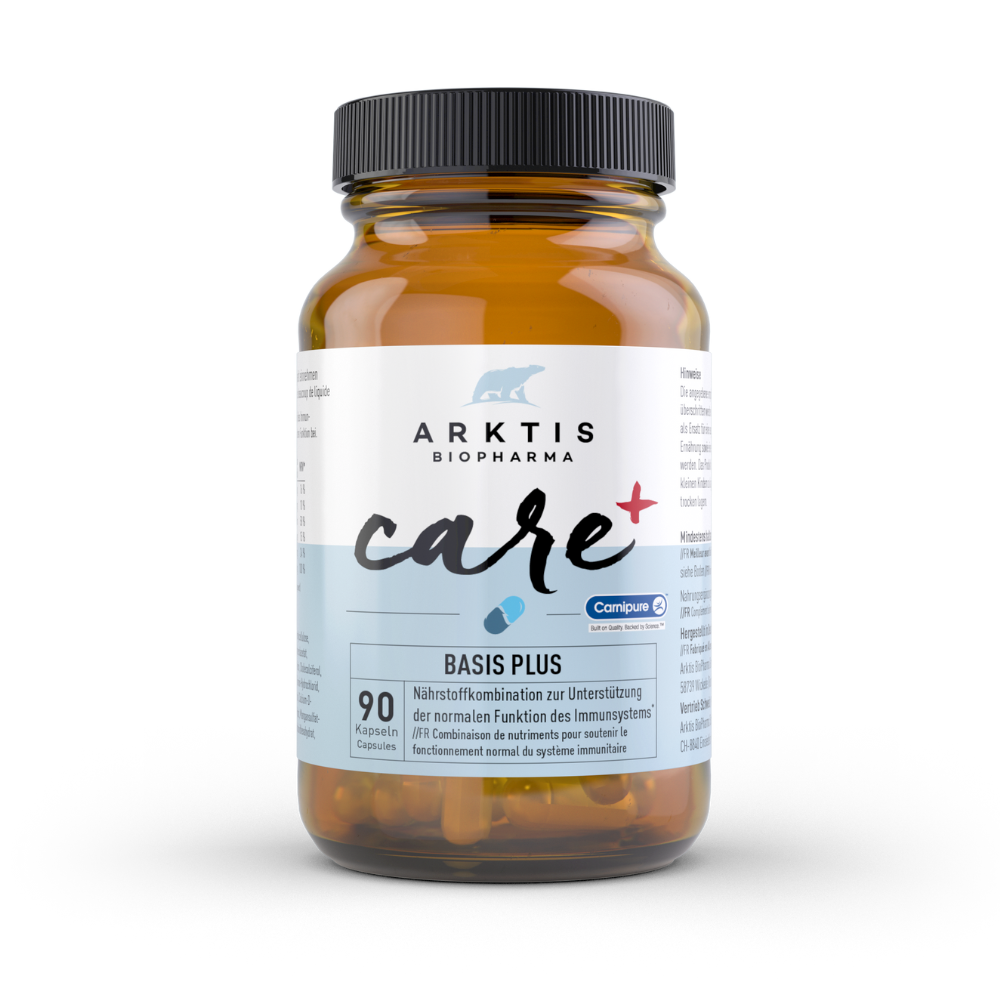[g_podcast id="13173695"]
Would you like to know which foods fuel inflammation and whichcan help you stay healthy? Then you should listen to this episode.I talk about this, among other things:
Hello and welcome to a new episodeof the Gut Happiness Podcast. My name is Julia Gruber. I'm your host and I'm delighted that you're with me again today.
I'd like to say tomy listeners and readersthat I'm incredibly gratefulfor all the feedback. I've heard from several people this week that they listen to my podcast regularly and that they recommend it to others. I'm really pleased that what I do is useful and that you enjoy it too. If you'd like to do me a favor and help my podcast along a little further, I'd also be very happy if you'd leave a review on Apple Podcast or other providers. This will definitely help even more people to find the podcast.
If you ever have a topic request or questions, we also have the option of leaving a voicemail on our website (just click on the bar on the right).You can leave your questions and topic requests there. I am very happy when we are in contact. I really enjoy covering a different topic here every week. It's even more fun when I hear that it's useful, that ithelpsyouand that you enjoy it.
Today I want to talk about 'anti-inflammatory nutrition' because I am currently writing an article for a printed newsletter on the subject. I was asked if I could write somethingabout it, and it occurred to me that you might be interested too. When I talk about anti-inflammatory nutrition, I am often asked: "What is anti-inflammatory nutrition? What foods are considered anti-inflammatory?"
Before I talk about the foods, I first need to explain whyit is important to eat an anti-inflammatory diet in the first place. Basically, the modern diseases of civilization all have an inflammatory characterin common.This is why it is so important not to promote inflammation with food, buttoreduceinflammation. Contrary to the view held by many people that the best way to combat inflammation is totake anti-inflammatory drugs, I do not see this as the first measure. The first measure should always be to look at your own diet and lifestyle and ask yourself how you can counteract inflammation yourself.
You shouldn't wait until you already have symptoms. We live in a more pro-inflammatory environment, so it makes sense to work a little every day to minimize inflammation.
I like to compare it to a wooden barrel that keeps filling up. From the outside, I can't see how full it already is, and then at some point it overflows.Then all these symptoms related to inflammation appear, such as joint pain or hay fever, asthma, cardiovascular diseases, autoimmune diseases, diabetes, irritable bowel syndrome ... Everything has to do with inflammation. These are not always obvious inflammations, but can also be"silent" inflammationsthat move around in the bodyand then trigger such symptoms. The barrel continues to fill up, and if I do something every day to take something out ofit, then it doesn't have to overflow in the first place. This means that bad symptoms don't have to develop in the first place. If symptoms are already present, I would definitely recommend that you take the following three measures:
These are the three measures I recommend. Today, however, I would like to focus more on the anti-inflammatory diet.
Antioxidants, which are important for this, arelike guardian angelsfor the body's cells. We take in oxygen with the air we breathe. Oxygen is important for us humans. However, oxygen can also take on aggressive forms, and these aggressive formsattack our cells. Oxygen in this form is called "free radicals". You may have already heard of this. Antioxidants are used to counteract these free radicals, i.e. to intercept them. The main source of antioxidants are vegetables and fruit. In my experience, this is something that is neglected in many people's diets, especially vegetables.
I always warn people not to overdo it with fruit, as it alsocontainsa lot ofsugar. That's why today we're concentrating on vegetables that have a particularly anti-inflammatory effect. At the top of the list are green leafy vegetables such as kale, kale, chard, pak choi ... These are super suppliers of vitamin C, which is a very powerful antioxidant.They alsocontainother vitamins, such as provitamin A (carotenoids)and vitamin K, which are verygood at defusing these free radicals.
I know that leafy green vegetables in particular are not very popular because many people simply don't like them. I have to say: there is no way around it.Incidentally,the chlorophyllin green leafy vegetables isalsovery healthy for our bodies. So it's important thatyou find a way to incorporate it into your diet. There are people who make greensmoothies data-contrast="auto"> because they taste better, but I must warn you not to use too much fruit, but mainly vegetables. However, there is also the option of cutting them into small pieces and adding them to a soup or sauce. You can generally make a sauce with the vegetables, then it tastes different again. You can even prepareit in the oven. For example, I have a great recipe for kale chips on my blog. There really are many ways to prepare green vegetables in a tasty way.
Another source of good antioxidants is celery, for example.It also contains potassium, as well as antioxidants, so it's definitely a vegetable that helps youfight inflammation.
Another good indicator of highly effective antioxidants is the red pigment found in beet, for example. In Switzerland they are called "Randeln", in Germany "Rote Bete" or "rote Rüben". They contain the colorantbetanin, which fights inflammation. Of course,these vegetablesalsocontain other nutrients such as iron, potassium and magnesium, which also have an anti-inflammatory effect.
Broccoli is another vegetable - again green - that is often mentionedwhen it comes to healthy eating. Broccoli is really a "flagship vegetable" and also contains good amounts of potassium, magnesium, vitamins,flavonoids,carotenoids and this helps to reduce the oxidative stress caused by oxygen in the body. Broccoli is therefore also a wonderful vegetable when it comes to anti-inflammatory nutrition.
Now to mention something from the fruit department: Blueberries are very wellknown for their anti-inflammatory effects. Blueberries containquercetin and otherflavonoids. They also have a high vitamin C content and can therefore protect our cells from inflammation. Other dark berries are also highly recommended, such as blackberries.Cherries also containquercetin.
I hope you find things you like in this list. As a rule of thumb, I can tell you to eat as many different things as possible, to alternate between them and not always eat the same thing.I notice time and again that people are creatures of habit. If you like eating something, you'll eat it every day, but variety is really super important to get as many nutrients as possible.
I always say that half of your plate should consist of vegetables for precisely these reasons. Vegetables have lots of high-quality nutrients that are good for our metabolism, fight inflammation and of course also contain good fiber for the intestines. So my tip is: don't skimp on vegetables. Instead, find new ways to prepare them so that the whole family can enjoy them.
In addition to vegetables, omega-3 fatty acids are important for fighting inflammation. You've probably heard this before. Omega-3 is one of the best known and most studied anti-inflammatory nutrients. You also find a lot of omega-3 in our brain, so it is also important for our brain performance: thinking, coordination, mood, etc. So that's another reason why it's important to make sure you're getting enough omega-3 fatty acids. There are plant and animal sources. Walnuts (known as "tree nuts" in Switzerland) are definitely a good source. They are rich in omega-3 fatty acids.
Then wild-caught salmon. I know salmonis very controversial, partly because of its heavy metal contamination and overfishing. I'm a little torn myself as to whether salmon can be recommended at all, but as far as omega-3 fatty acidsare concerned, it would be a super great source. What is not so healthy are farmed salmon, because they are often not fed well and no longer live in the wild. The best source of omega-3 is cold water fish. If salmon, then I would go for wild-caught salmon. You could perhaps also make sure that if youeatsalmon, which could contain heavy metals, youcombine it with green leafy vegetables in order to be able to absorb certain toxins right away.
Chia seeds are a good source.Chia seeds are also controversial. Some people love them,othersare bothered by the fact that they are imported from so far away, as they come from South America. However, I always get feedback on this - even today. I once wrote on my blog aboutchia seeds on my blog. What people sometimes report! What a great effect the seeds have! On their metabolism, on digestion, on pain, ... It really is amazing. I can't prove it. I can't back it up with studies.And yetchia seeds data-contrast="auto"> to be something that helps a lot of people incredibly well. Just give it a try.
As with everything in nutrition: just try things out. Don't just blindly take my word for it, but see what works for you, what's good for you. It's not about staying stuck in theory for too long. Our body reports backwhat is good for it and what is not. You can simply try it out. You can't make many mistakes as long as you stick to the "healthy guidelines" that Iexplainhere in the podcast time and again.
Flaxseed is definitely something you can find omega-3 in, and it's a native seed.However, they need to be ground so that the body can access the omega-3 fatty acids. The hard shell cannot be broken down by the body in the digestive tract.
Omega-3 is also found in meat that has been raised in a healthy way. By "healthy" I mean above all species-appropriate husbandry and feeding, preferably pasture-raised, where the animals really do eat grass. You will also find anti-inflammatory components in this meat. Wild meat anyway, if the animal has lived in the wild and is not farmed. I am generally not against meat as long as it has been kept in a species-appropriate way and has been fed well. Then meat definitely has a place in your diet if you want it to.
Omega-3s can also be found in eggs or in butter - again from grazing animals. In principle, omega-3 from animal sources is actually more usable for the body than plant-based omega-3. However, there are omega-3 supplementsfrommicroalgae. Iam thinkingin particular of vegans who do not eat any animal foods at all. They should think about whether they might want to use a microalgae product like this to get enough omega-3.
If you would like to know exactly what your omega-3 ratio to omega-6 and omega-9 is, then I would recommend having an omega-3 index determined. This is a relatively simple blood test that shows you in black and white whether your metabolism is more pro-inflammatory or anti-inflammatory.
If your budget allows, I would even havethe entirefatty acid profile done. Then you can really see exactly what it looks like for you. Many people today simply have far too high a proportion of omega-6 compared to omega-3, whichin turn tends to promote inflammation.
It data-contrast="auto"> There's no harm in simply having this determined. I have an interesting observation for you - this is not a study, but something my husband and I simply had done.We each had an omega-3 index done once. We eat the same diet. We work together, we live together, we eat 99% of the same things. Theinteresting thing was that his omega-3 indexwas very good and mine was very bad. This shows once again that although diet is important, other factors also play a role. That's why I can't say often enough: testing and measuring things from time to timenever hurts. In fact, it helps you to make better decisions based on the data.
Anotherimportantcomponent ofan anti-inflammatory diet is definitely to use good fats. I know even today people still say, "I eat low fat" and think that's super healthy. People used to say "fat makes you fat", and that's simply not true. I would rather say "fat makes you fit". The fear of fat is unfounded. There are now really good studies, good findings, and fat is really important for our body, especially when it comes to fighting inflammation.
Coconut oil, for example, has a very high antioxidant content, which is why it is agood companion when it comes to scavenging free radicals. With coconut oil, however, it is important tobuyagood oil. I see this all the time, that people buy cheap coconut oil from the supermarket that has been hardened. That's not what I'm talking about. I'mtalking aboutcold-pressed coconut oilthat actuallycontains these high-qualitycomponents. You can find this in well-stocked supermarkets nowadays. However,it is usually a little more expensive and normally comes in a screw-top jar. It is not quite as solid.It also depends on the temperature. Now it is cold, it is of course relatively solid. In summerit can even be completely liquid.
Coconutoil is perhaps a little misleading. It doesn't look like oil, but more like Vaseline. So I would highly recommend it. If you don't like the taste, there is also deodorized coconut oil, which is not as strong. tastes like coconut. However, I find that if you use it for cooking and frying and also use spices, you can't really taste the coconut flavor. The good thing is that you can also use coconut oil for frying. You can heat it up without damaging it, which is why I think it belongs in every household. There are other oils that I recommend when it comes to omega-3, such as rapeseed oil and linseed oil -butshouldnot be heated.
Olive oil is also a very good oil thatcontainsantioxidantsand bitter substances. Thisis also part of an anti-inflammatory diet.
On the subject of anti-inflammatory nutrition,ginger should also be mentioned. Ginger supports the immune system and byslowing downan overactiveimmunesystem, ginger has an anti-inflammatory effect. Another spice that is often mentioned for its anti-inflammatory effect is turmeric. This is the yellow powder that also colors curry powder yellow.Turmeric contains curcumin, which has a very good anti-inflammatory effect.It is also used for arthritis, for example.You can simply try itout. Of course, I would also choose good quality,preferablyorganic. Look around for a good retailer. With curcumin, it is important that you always combine it with black pepper to supportabsorption. Thepiperine in black pepper improves theabsorption ofcurcumin. There are also supplements -capsules -that you can take,but of course you can also add it to your food. You shouldn't overdo it with the quantities. It's like anything else: You can take too much of anything. Regular curcumin, or turmeric, can help fight inflammation very well.
The last thing Iwouldlike to mention is bone broth. You can make it yourselfby getting organic or even Demeter beef bones, pouring water over them and adding some soup vegetables. Then leave to simmer for a really long time. I would leavethe to simmer for at least twelve hours, longer if necessary. This simmering releases minerals into the water, which you then drink afterwards. For example,it contains calcium, magnesium, phosphorus,sulphur- in other words, lots of minerals - and the bone broth also contains glucosamine andchondroitin. You may even know these from advertising, because they are also contained in certainpills for joints, but you can get them for very little money in a bone broth. The bones are not expensive. It's something that has a really good anti-inflammatory effect. There are also amino acids in the bone broth. So, it really is such a "power house". It's a jack of all tradeswhen it comes to nutrients. It contains amino acids such asproline, glycine and glutamine, which also helps to soothe an inflamed intestinal mucosa.
Inflammation very often comes from the gut. You may have heard me say that before. That's why it's important to do something good for the intestinal mucosa. Especially if you are struggling with inflammation, perhaps also have joint pain, etc., I would recommend taking a little bone broth every day. If you don't have time to make it yourself, you can nowalsobuyhigh-quality bone broth that is really well made.
We have now talked about anti-inflammatory nutrition. Perhaps a brief summary once again: I've listed some vegetables for you and, above all, I've pointed out again that green vegetables are very, very important. We've talked about omega-3 fatty acids, we've talked about good fats and a few spices that youcan add.
Now it might be time to talk about which pro-inflammatory foods you should avoid. First of all, I can tell you that the more anti-inflammatory foods you eat, the less desire you will have for pro-inflammatory foods. It really does come naturally. Just try it out.
But what you should really avoid, the "bad guys" are hydrogenated fats, trans fats, such as those found in industrially produced food. Then "fastcarbohydrates", anything that causes your sugar levels to rise quickly, such as white flour products or too much fruit. That's also part of it, especially very sweet fruit, which constantly pushes up your sugar levels. Then sweets, sugar and alcohol. These are things that increase your sugar levels. The higher your sugar level, the more stress hormones are also producedandthe more insulin isreleased. Insulin then converts sugar into fat. This is what creates belly fat in particular, and we know that belly fat in particular is inflammatory and promotes inflammation throughout the body.That's why these arethings that are betterleftout.
In my opinion, you shouldn't eat industrially produced food anyway. I've said that many times before. Eat natural food, real food. If youonly stick to it you're already doing something good for your body.
What doesn't have so much to do with nutrition, something I only mentioned very briefly at the beginning, is certainly moderate exercise. It's not good if you overdo it andif you do too muchwhen you're perhaps already stressed. If you're also running around and training for a marathon or triathlon, if you're pushing yourself to the limit with recreational sports even though you're already stressed,then thatalsopromotes inflammation. Sport is not necessarily healthy in every way. It's all about moderate exercise. This also helps you to minimize inflammation.
This brings us back to lifestyle and stress reduction. I talk about this again and again here in the podcast. As you can see, it's not just diet alone that keeps your inflammation in check, but it's a holistic approach, like everything else I keeptalking about. It's really aboutall thesedifferent components.
Now I'm glad you joined me andit would be wonderful if you listened again next week. I wish you a wonderful rest of the day.
Now I recommend you subscribe to the podcast so you don't miss an episode and if you like what you hear, I really appreciate a review on iTunes or Apple Podcast. Because these reviews also help other people find the podcast so we can spread the knowledge about gut and health more.




Would you like to know which foods fuel inflammation and whichcan help you stay healthy? Then you should listen to this episode.I talk about this, among other things:
- What is the link between inflammation and diet?
- The 3 top tips against inflammation
- What are antioxidants?
- Which foods help to reduce or prevent inflammation?
- What is afatty acid profile and what role does it play in inflammation?
- Which foods promote inflammation?
Hello and welcome to a new episodeof the Gut Happiness Podcast. My name is Julia Gruber. I'm your host and I'm delighted that you're with me again today.
I'd like to say tomy listeners and readersthat I'm incredibly gratefulfor all the feedback. I've heard from several people this week that they listen to my podcast regularly and that they recommend it to others. I'm really pleased that what I do is useful and that you enjoy it too. If you'd like to do me a favor and help my podcast along a little further, I'd also be very happy if you'd leave a review on Apple Podcast or other providers. This will definitely help even more people to find the podcast.
If you ever have a topic request or questions, we also have the option of leaving a voicemail on our website (just click on the bar on the right).You can leave your questions and topic requests there. I am very happy when we are in contact. I really enjoy covering a different topic here every week. It's even more fun when I hear that it's useful, that ithelpsyouand that you enjoy it.
Anti-inflammatory diet
Today I want to talk about 'anti-inflammatory nutrition' because I am currently writing an article for a printed newsletter on the subject. I was asked if I could write somethingabout it, and it occurred to me that you might be interested too. When I talk about anti-inflammatory nutrition, I am often asked: "What is anti-inflammatory nutrition? What foods are considered anti-inflammatory?"
Before I talk about the foods, I first need to explain whyit is important to eat an anti-inflammatory diet in the first place. Basically, the modern diseases of civilization all have an inflammatory characterin common.This is why it is so important not to promote inflammation with food, buttoreduceinflammation. Contrary to the view held by many people that the best way to combat inflammation is totake anti-inflammatory drugs, I do not see this as the first measure. The first measure should always be to look at your own diet and lifestyle and ask yourself how you can counteract inflammation yourself.
You shouldn't wait until you already have symptoms. We live in a more pro-inflammatory environment, so it makes sense to work a little every day to minimize inflammation.
My three top tips against inflammation
I like to compare it to a wooden barrel that keeps filling up. From the outside, I can't see how full it already is, and then at some point it overflows.Then all these symptoms related to inflammation appear, such as joint pain or hay fever, asthma, cardiovascular diseases, autoimmune diseases, diabetes, irritable bowel syndrome ... Everything has to do with inflammation. These are not always obvious inflammations, but can also be"silent" inflammationsthat move around in the bodyand then trigger such symptoms. The barrel continues to fill up, and if I do something every day to take something out ofit, then it doesn't have to overflow in the first place. This means that bad symptoms don't have to develop in the first place. If symptoms are already present, I would definitely recommend that you take the following three measures:
- Anti-inflammatorydiet with lots of antioxidants, omega-3 and other good fats and oils
- Intestinal cleansing measures with pro- and prebiotic foods, eating slowly, chewing well, taking breaks between meals (I've talked about this many times here in the podcast, but it's not the main topic today)
- Stress reduction - mindfulness, exercise, observing and directing thoughts, gratitude, reducing toxins, not only from food, but also from cosmetics, household items, cleaning products, etc.
These are the three measures I recommend. Today, however, I would like to focus more on the anti-inflammatory diet.
What areantioxidants?
Antioxidants, which are important for this, arelike guardian angelsfor the body's cells. We take in oxygen with the air we breathe. Oxygen is important for us humans. However, oxygen can also take on aggressive forms, and these aggressive formsattack our cells. Oxygen in this form is called "free radicals". You may have already heard of this. Antioxidants are used to counteract these free radicals, i.e. to intercept them. The main source of antioxidants are vegetables and fruit. In my experience, this is something that is neglected in many people's diets, especially vegetables.
Vegetables in all colors of the rainbow
I always warn people not to overdo it with fruit, as it alsocontainsa lot ofsugar. That's why today we're concentrating on vegetables that have a particularly anti-inflammatory effect. At the top of the list are green leafy vegetables such as kale, kale, chard, pak choi ... These are super suppliers of vitamin C, which is a very powerful antioxidant.They alsocontainother vitamins, such as provitamin A (carotenoids)and vitamin K, which are verygood at defusing these free radicals.
I know that leafy green vegetables in particular are not very popular because many people simply don't like them. I have to say: there is no way around it.Incidentally,the chlorophyllin green leafy vegetables isalsovery healthy for our bodies. So it's important thatyou find a way to incorporate it into your diet. There are people who make greensmoothies
Another source of good antioxidants is celery, for example.It also contains potassium, as well as antioxidants, so it's definitely a vegetable that helps youfight inflammation.
Another good indicator of highly effective antioxidants is the red pigment found in beet, for example. In Switzerland they are called "Randeln", in Germany "Rote Bete" or "rote Rüben". They contain the colorantbetanin, which fights inflammation. Of course,these vegetablesalsocontain other nutrients such as iron, potassium and magnesium, which also have an anti-inflammatory effect.
Broccoli is another vegetable - again green - that is often mentionedwhen it comes to healthy eating. Broccoli is really a "flagship vegetable" and also contains good amounts of potassium, magnesium, vitamins,flavonoids,carotenoids and this helps to reduce the oxidative stress caused by oxygen in the body. Broccoli is therefore also a wonderful vegetable when it comes to anti-inflammatory nutrition.
Now to mention something from the fruit department: Blueberries are very wellknown for their anti-inflammatory effects. Blueberries containquercetin and otherflavonoids. They also have a high vitamin C content and can therefore protect our cells from inflammation. Other dark berries are also highly recommended, such as blackberries.Cherries also containquercetin.
I hope you find things you like in this list. As a rule of thumb, I can tell you to eat as many different things as possible, to alternate between them and not always eat the same thing.I notice time and again that people are creatures of habit. If you like eating something, you'll eat it every day, but variety is really super important to get as many nutrients as possible.
I always say that half of your plate should consist of vegetables for precisely these reasons. Vegetables have lots of high-quality nutrients that are good for our metabolism, fight inflammation and of course also contain good fiber for the intestines. So my tip is: don't skimp on vegetables. Instead, find new ways to prepare them so that the whole family can enjoy them.
Omega-3 fatty acids against inflammation
In addition to vegetables, omega-3 fatty acids are important for fighting inflammation. You've probably heard this before. Omega-3 is one of the best known and most studied anti-inflammatory nutrients. You also find a lot of omega-3 in our brain, so it is also important for our brain performance: thinking, coordination, mood, etc. So that's another reason why it's important to make sure you're getting enough omega-3 fatty acids. There are plant and animal sources. Walnuts (known as "tree nuts" in Switzerland) are definitely a good source. They are rich in omega-3 fatty acids.
Then wild-caught salmon. I know salmonis very controversial, partly because of its heavy metal contamination and overfishing. I'm a little torn myself as to whether salmon can be recommended at all, but as far as omega-3 fatty acidsare concerned, it would be a super great source. What is not so healthy are farmed salmon, because they are often not fed well and no longer live in the wild. The best source of omega-3 is cold water fish. If salmon, then I would go for wild-caught salmon. You could perhaps also make sure that if youeatsalmon, which could contain heavy metals, youcombine it with green leafy vegetables in order to be able to absorb certain toxins right away.
Chia seeds are a good source.Chia seeds are also controversial. Some people love them,othersare bothered by the fact that they are imported from so far away, as they come from South America. However, I always get feedback on this - even today. I once wrote on my blog aboutchia seeds on my blog. What people sometimes report! What a great effect the seeds have! On their metabolism, on digestion, on pain, ... It really is amazing. I can't prove it. I can't back it up with studies.And yetchia seeds
As with everything in nutrition: just try things out. Don't just blindly take my word for it, but see what works for you, what's good for you. It's not about staying stuck in theory for too long. Our body reports backwhat is good for it and what is not. You can simply try it out. You can't make many mistakes as long as you stick to the "healthy guidelines" that Iexplainhere in the podcast time and again.
Flaxseed is definitely something you can find omega-3 in, and it's a native seed.However, they need to be ground so that the body can access the omega-3 fatty acids. The hard shell cannot be broken down by the body in the digestive tract.
Omega-3 is also found in meat that has been raised in a healthy way. By "healthy" I mean above all species-appropriate husbandry and feeding, preferably pasture-raised, where the animals really do eat grass. You will also find anti-inflammatory components in this meat. Wild meat anyway, if the animal has lived in the wild and is not farmed. I am generally not against meat as long as it has been kept in a species-appropriate way and has been fed well. Then meat definitely has a place in your diet if you want it to.
Omega-3s can also be found in eggs or in butter - again from grazing animals. In principle, omega-3 from animal sources is actually more usable for the body than plant-based omega-3. However, there are omega-3 supplementsfrommicroalgae. Iam thinkingin particular of vegans who do not eat any animal foods at all. They should think about whether they might want to use a microalgae product like this to get enough omega-3.
Do you know yourfatty acid profile?
If you would like to know exactly what your omega-3 ratio to omega-6 and omega-9 is, then I would recommend having an omega-3 index determined. This is a relatively simple blood test that shows you in black and white whether your metabolism is more pro-inflammatory or anti-inflammatory.
If your budget allows, I would even havethe entirefatty acid profile done. Then you can really see exactly what it looks like for you. Many people today simply have far too high a proportion of omega-6 compared to omega-3, whichin turn tends to promote inflammation.
It
Good fats are the be-all and end-all
Anotherimportantcomponent ofan anti-inflammatory diet is definitely to use good fats. I know even today people still say, "I eat low fat" and think that's super healthy. People used to say "fat makes you fat", and that's simply not true. I would rather say "fat makes you fit". The fear of fat is unfounded. There are now really good studies, good findings, and fat is really important for our body, especially when it comes to fighting inflammation.
Coconut oil, for example, has a very high antioxidant content, which is why it is agood companion when it comes to scavenging free radicals. With coconut oil, however, it is important tobuyagood oil. I see this all the time, that people buy cheap coconut oil from the supermarket that has been hardened. That's not what I'm talking about. I'mtalking aboutcold-pressed coconut oilthat actuallycontains these high-qualitycomponents. You can find this in well-stocked supermarkets nowadays. However,it is usually a little more expensive and normally comes in a screw-top jar. It is not quite as solid.It also depends on the temperature. Now it is cold, it is of course relatively solid. In summerit can even be completely liquid.
Coconutoil is perhaps a little misleading. It doesn't look like oil, but more like Vaseline. So I would highly recommend it. If you don't like the taste, there is also deodorized coconut oil, which is not as strong. tastes like coconut. However, I find that if you use it for cooking and frying and also use spices, you can't really taste the coconut flavor. The good thing is that you can also use coconut oil for frying. You can heat it up without damaging it, which is why I think it belongs in every household. There are other oils that I recommend when it comes to omega-3, such as rapeseed oil and linseed oil -butshouldnot be heated.
Olive oil is also a very good oil thatcontainsantioxidantsand bitter substances. Thisis also part of an anti-inflammatory diet.
On the subject of anti-inflammatory nutrition,ginger should also be mentioned. Ginger supports the immune system and byslowing downan overactiveimmunesystem, ginger has an anti-inflammatory effect. Another spice that is often mentioned for its anti-inflammatory effect is turmeric. This is the yellow powder that also colors curry powder yellow.Turmeric contains curcumin, which has a very good anti-inflammatory effect.It is also used for arthritis, for example.You can simply try itout. Of course, I would also choose good quality,preferablyorganic. Look around for a good retailer. With curcumin, it is important that you always combine it with black pepper to supportabsorption. Thepiperine in black pepper improves theabsorption ofcurcumin. There are also supplements -capsules -that you can take,but of course you can also add it to your food. You shouldn't overdo it with the quantities. It's like anything else: You can take too much of anything. Regular curcumin, or turmeric, can help fight inflammation very well.
Jack of all trades Bone broth
The last thing Iwouldlike to mention is bone broth. You can make it yourselfby getting organic or even Demeter beef bones, pouring water over them and adding some soup vegetables. Then leave to simmer for a really long time. I would leavethe to simmer for at least twelve hours, longer if necessary. This simmering releases minerals into the water, which you then drink afterwards. For example,it contains calcium, magnesium, phosphorus,sulphur- in other words, lots of minerals - and the bone broth also contains glucosamine andchondroitin. You may even know these from advertising, because they are also contained in certainpills for joints, but you can get them for very little money in a bone broth. The bones are not expensive. It's something that has a really good anti-inflammatory effect. There are also amino acids in the bone broth. So, it really is such a "power house". It's a jack of all tradeswhen it comes to nutrients. It contains amino acids such asproline, glycine and glutamine, which also helps to soothe an inflamed intestinal mucosa.
Inflammation very often comes from the gut. You may have heard me say that before. That's why it's important to do something good for the intestinal mucosa. Especially if you are struggling with inflammation, perhaps also have joint pain, etc., I would recommend taking a little bone broth every day. If you don't have time to make it yourself, you can nowalsobuyhigh-quality bone broth that is really well made.
We have now talked about anti-inflammatory nutrition. Perhaps a brief summary once again: I've listed some vegetables for you and, above all, I've pointed out again that green vegetables are very, very important. We've talked about omega-3 fatty acids, we've talked about good fats and a few spices that youcan add.
Pro-inflammatory diet
Now it might be time to talk about which pro-inflammatory foods you should avoid. First of all, I can tell you that the more anti-inflammatory foods you eat, the less desire you will have for pro-inflammatory foods. It really does come naturally. Just try it out.
But what you should really avoid, the "bad guys" are hydrogenated fats, trans fats, such as those found in industrially produced food. Then "fastcarbohydrates", anything that causes your sugar levels to rise quickly, such as white flour products or too much fruit. That's also part of it, especially very sweet fruit, which constantly pushes up your sugar levels. Then sweets, sugar and alcohol. These are things that increase your sugar levels. The higher your sugar level, the more stress hormones are also producedandthe more insulin isreleased. Insulin then converts sugar into fat. This is what creates belly fat in particular, and we know that belly fat in particular is inflammatory and promotes inflammation throughout the body.That's why these arethings that are betterleftout.
In my opinion, you shouldn't eat industrially produced food anyway. I've said that many times before. Eat natural food, real food. If youonly stick to it you're already doing something good for your body.
What doesn't have so much to do with nutrition, something I only mentioned very briefly at the beginning, is certainly moderate exercise. It's not good if you overdo it andif you do too muchwhen you're perhaps already stressed. If you're also running around and training for a marathon or triathlon, if you're pushing yourself to the limit with recreational sports even though you're already stressed,then thatalsopromotes inflammation. Sport is not necessarily healthy in every way. It's all about moderate exercise. This also helps you to minimize inflammation.
This brings us back to lifestyle and stress reduction. I talk about this again and again here in the podcast. As you can see, it's not just diet alone that keeps your inflammation in check, but it's a holistic approach, like everything else I keeptalking about. It's really aboutall thesedifferent components.
Now I'm glad you joined me andit would be wonderful if you listened again next week. I wish you a wonderful rest of the day.
Now I recommend you subscribe to the podcast so you don't miss an episode and if you like what you hear, I really appreciate a review on iTunes or Apple Podcast. Because these reviews also help other people find the podcast so we can spread the knowledge about gut and health more.

















